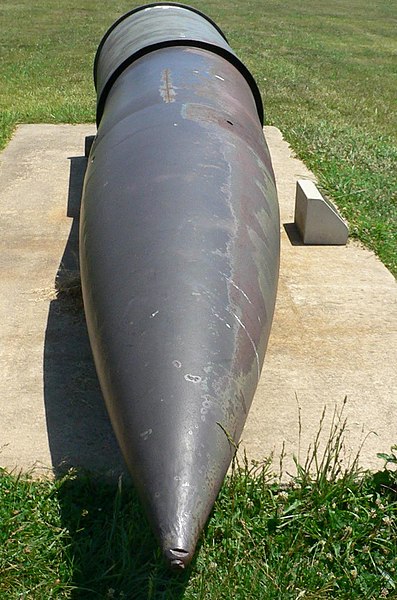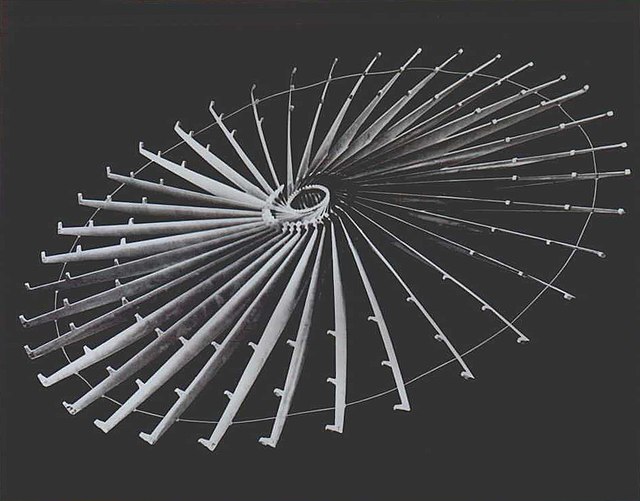A projectile is an object that is propelled by the application of an external force and then moves freely under the influence of gravity and air resistance. Although any objects in motion through space are projectiles, they are commonly found in warfare and sports.
A projectile being fired from an artillery piece
Projectile and cartridge case for the huge World War II Schwerer Gustav artillery piece. Most projectile weapons use the compression or expansion of gases as their motive force.
Ball speeds of 105 miles per hour (169 km/h) have been recorded in baseball.
The Homing Overlay Experiment used a metal fan that was rolled up during launch and expanded during flight. The metal has five times as much destructive power as an explosive warhead of the same weight.
In physics, a force is an influence that can cause an object to change its velocity, i.e., to accelerate, meaning a change in speed or direction, unless counterbalanced by other forces. The concept of force makes the everyday notion of pushing or pulling mathematically precise. Because the magnitude and direction of a force are both important, force is a vector quantity. The SI unit of force is the newton (N), and force is often represented by the symbol F.
Aristotle famously described a force as anything that causes an object to undergo "unnatural motion"
Sir Isaac Newton in 1689. His Principia presented his three laws of motion in geometrical language, whereas modern physics uses differential calculus and vectors.
Galileo Galilei was the first to point out the inherent contradictions contained in Aristotle's description of forces.
Images of a freely falling basketball taken with a stroboscope at 20 flashes per second. The distance units on the right are multiples of about 12 millimeters. The basketball starts at rest. At the time of the first flash (distance zero) it is released, after which the number of units fallen is equal to the square of the number of flashes.








